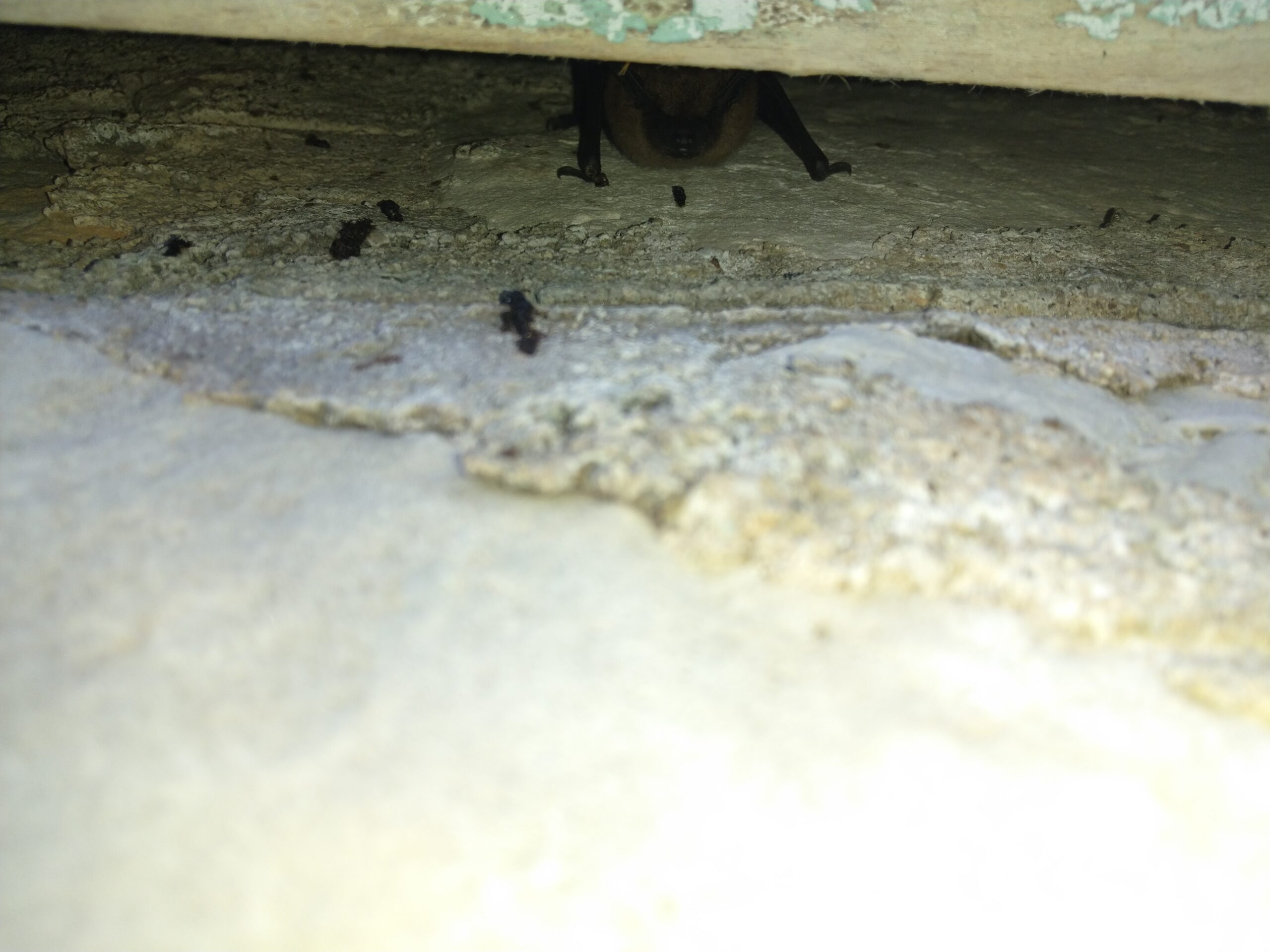
How Do I Know If I Have Bats?
With over three decades of experience, Skedaddle knows that seeing a bat flying around the living space is the most common way for a homeowner to discover they have a bat problem. Our specialists know that “bat season” has officially arrived when we begin receiving frantic calls in the middle of the night from homeowners reporting a bat flying around their bedroom.
WHAT TIME OF YEAR DO BATS ENTER HOMES?
These calls typically begin in late May and reach their peak in August when temperatures are at their hottest and bats are most active. Bat populations surge during the summer months when those bats born in June begin to take flight. Female bats will give birth to 1-2 bats each June and they will live together, separate from males, in nursery roosts during the summer.It is precisely during this time that bats begin making their way into bedrooms, kitchens and living rooms.
Most homeowners who have awoken to the site of a bat flying overhead assume that it found its way into the home through an open door or window – especially during the dog days of summer. Often, it is not until the second, third or fourth occurrence that they begin to believe the problem may be more serious.
DID THE A ENTER MY HOME THROUGH THE WINDOW?

Contrary to popular belief, it is very rare for a single bat to simply fly through the window into a home. If you find a bat inside, it’s likely the case that they have come from somewhere else inside the home, typically the attic of the wall cavities.Upon learning that a colony of bats has made themselves at home in the attic, customers always ask, “How did they get from my attic into the house?” The answer comes as a surprise to most. It is not hard to imagine just how hot it can get inside your home’s walls and attic during the height of summer. Bats enjoy warm stable temperatures, but even they have their limits. As a nocturnal mammal, bats sleep during the day. As the temperatures inside your home’s interior rise during a summer day, the bats inside the walls will begin to sleepwalk downward in search of cooler and more comfortable temperatures.
Unfortunately, once they wake up in the evening to feed, bats will find that they have traveled too far down from their usual roosting position and can no longer locate their entry and exit point. As they move inside the wall cavity in search of an exit, they often emerge into the living space of the home. Bats like these have traveled an unfamiliar path and have very little chance of returning back into the wall cavity they came from. The bat is now lost and disoriented. That’s why bats in homes are often seen flying seemingly endless laps around the ceiling.
HOW TO IDENTIFY A BAT PROBLEM:
If you don’t have a bat flying around your living room, but still suspect that there is a colony somewhere in your home, there are ways you can identify if there are bats present and where they are living in your home.
- Seeing bats exit the attic to feed at dusk.
- Accumulations of bat droppings on the ground or exterior walls, especially below entry points.
- Brown staining left behind by bats on siding, soffit, and aluminum trim. A bat’s fur is very oily and will leave a mark on building materials over time. This oil also allows them to slide into tiny openings with ease.
- Smell – bat feces and urine can produce an overwhelming odour, especially in homes with large colonies or long-standing problems.
- Sounds – scratching, clawing and squeaking inside walls or ceilings as bats move at night or early morning. Many people mistake the sound of bats for mice.
- Hearing scratching or movement in your attic or wall cavities from dusk to dawn.
HAVE A BAT PROBLEM? TIME TO CALL TO SKEDADDLE
Fortunately, Skedaddle is the expert in humane wildlife control, and can safely remove and exclude bats from your home. Whether a bat has made its way in your living room, or you suspect the sounds coming from your attic may be a colony, our technicians will complete a 50 point search of your home and identify any entry points and damage. Our technicians will create a customized removal plan that works best for your situation. Once the bats are gone, our technicians will clean the area where bats lived and seal all their entry points with galvanized steel screens. After the bats have skedaddles’ you won’t have to deal with them again. If you need help getting a bat colony removed from your home, call us now at 1-888-592-0387.
CALL US TODAY
1.888.592.0387
OR
Request for Services



FOLLOW US